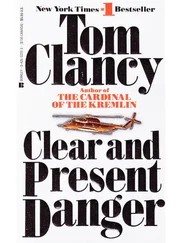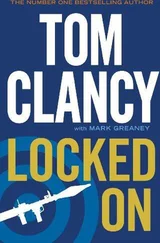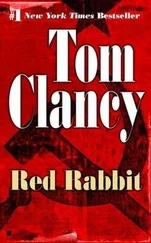Tom Clancy - Debt of Honor
Здесь есть возможность читать онлайн «Tom Clancy - Debt of Honor» весь текст электронной книги совершенно бесплатно (целиком полную версию без сокращений). В некоторых случаях можно слушать аудио, скачать через торрент в формате fb2 и присутствует краткое содержание. Год выпуска: 1994, Жанр: Триллер, на английском языке. Описание произведения, (предисловие) а так же отзывы посетителей доступны на портале библиотеки ЛибКат.
- Название:Debt of Honor
- Автор:
- Жанр:
- Год:1994
- ISBN:нет данных
- Рейтинг книги:4 / 5. Голосов: 1
-
Избранное:Добавить в избранное
- Отзывы:
-
Ваша оценка:
- 80
- 1
- 2
- 3
- 4
- 5
Debt of Honor: краткое содержание, описание и аннотация
Предлагаем к чтению аннотацию, описание, краткое содержание или предисловие (зависит от того, что написал сам автор книги «Debt of Honor»). Если вы не нашли необходимую информацию о книге — напишите в комментариях, мы постараемся отыскать её.
Debt of Honor — читать онлайн бесплатно полную книгу (весь текст) целиком
Ниже представлен текст книги, разбитый по страницам. Система сохранения места последней прочитанной страницы, позволяет с удобством читать онлайн бесплатно книгу «Debt of Honor», без необходимости каждый раз заново искать на чём Вы остановились. Поставьте закладку, и сможете в любой момент перейти на страницу, на которой закончили чтение.
Интервал:
Закладка:
Those around the table nodded. It wasn't that hard a call. For the second time in the past three months, President Durling had made it known, quietly, through the Secretary of the Treasury, that he would not object to another half-point rise in the Discount Rate. That was the interest rate which the Federal Reserve charged to banks that borrowed money—where else would they borrow such sums, except from the Fed? Any rise in that rate, of course, was passed immediately on to the consumer.
It was a constant balancing act, for the men and women around the polished oak table. They controlled the quantity of money in the American economy. As though by turning the valve that opened or closed the floodgate on an irrigation dam, they could regulate the amount of currency that existed, trying always not to provide too much or too little.
It was more complex than that, of course. Money had little physical reality. The Bureau of Engraving and Printing, located less than a mile away, had neither the paper nor the ink to make enough one-dollar bills for what the Fed parceled out every day. "Money" was mainly an electronic expression, a matter of sending a message: You, First National Bank of Podunk, now have an additional three million dollars which you may lend to Joe's Hardware, or Jeff Brown's Gas-and-Go, or for new homeowners to borrow as mortgage loans to pay back for the next twenty years. Few of these people were paid in cash—with credit cards there was less for a robber to steal, an employee to embezzle, or most inconveniently of all, a clerk to count, recount, and walk to the local branch of the bank. As a result, what appeared by the magic of computer E-mail or teleprinter message was lent out by written draft, to be repaid later by yet another theoretical expression, usually a check written on a small slip of special paper, often decorated with the pictures of a flying eagle or a fishing boat on some lake that didn't exist, because the banks competed for customers and people liked such things.
The power of the people in this room was so stunning that even they rarely thought about it. By a simple decision, the people around the table had just made everything in America cost more. Every adjustable-rate mortgage for every home, every auto loan, every credit card revolving line, would become more expensive every month. Because of that decision, every business and household in America would have less disposable income to spend on employee benefits or Christmas toys. What began as a press release would reach into every wallet in the nation. Prices would increase on every consumer item from home computers to bubble gum, thus reducing further still everyone's real buying power.
And this was good, the Fed thought. All the statistical indicators said the economy was running a little too hot. There was a real danger of increasing inflation. In fact, there was always inflation to one degree or another, but the interest raise would limit it to tolerable levels. Prices would still go up somewhat, and the increase in the discount rate would make them go up further still.
It was an example of fighting fire with fire. Raising interest rates meant that, at the margin, people would borrow less, which would actually reduce the amount of money in circulation, which would lessen the buying pressure, which would cause prices to stabilize, more or less, and prevent something that all knew to be more harmful than a momentary blip in interest rates. Like ripples expanding from a stone tossed into a lake, there would be other effects still. The interest on Treasury bills would increase. These were debt instruments of the government itself. People—actually institutions for the most part, like banks and pension funds and investment firms that had to park their clients' money somewhere while waiting for a good opportunity on the stock market—would give money, electronically, to the government for a term varying from three months to thirty years, and in return for the use of that money, the government itself had to pay interest (much of it recouped in taxes, of course). The marginal increase in the Federal-funds rate would raise the interest rate the government had to pay—determined at an auction. Thus the cost of the federal deficit would also increase, forcing the government to pull in more of the domestic money supply, reducing the pool of money available to personal and business loans and further increasing interest rates for the public through market forces over and above what the Fed enforced itself. Finally, the mere fact that bank and T-Bill rates would increase made the stock market less attractive to investors because the government-guaranteed return was "safer" than the more speculative rate of return anticipated by a company whose products and/or services had to compete in the marketplace.
On Wall Street, individual investors and professional managers who monitored economic indicators took the evening news (increases in the Fed rate were usually timed for release after the close of the markets) phlegmatically and made the proper notes to "go short on" (sell) their positions in some issues. This would reduce the posted values of numerous stocks, causing the Dow Jones Industrial Average to sink. Actually, it was not an average at all, but the sum of the current market value of thirty blue-chip stocks, with Allied Signal on one end of the alphabet, Woolworth's on the other, and Merck in the middle. It was an indicator whose utility today was mainly that of giving the news media something to report to the public, which for the most part didn't know what it represented anyway. The dip in "the Dow" would make some people nervous, causing more selling, and more decline in the market until others saw opportunity in stock issues that had been depressed farther than they deserved to be. Sensing that the true value of those issues was higher than the market price indicated, they would buy in measured quantities, allowing the Dow (and other market indicators) to increase again until a point of equilibrium was reached, and confidence restored. And all these multifaceted changes were imposed on everyone's individual lives by a handful of people in an ornate boardroom in Washington, D.C., whose names few investment professionals even knew, much less the general public.
The remarkable thing was that everyone accepted the entire process, seemingly as normal as physical laws of nature, despite the fact that it was really as ethereal as a rainbow. The money did not physically exist. Even "real" money was only specially made paper printed with black ink on the front and green on the back. What backed the money was not gold or something of intrinsic value, but rather the collective belief that money had value because it had to have such value. Thus it was that the monetary system of the United States and every other country in the world was entirely an exercise in psychology, a thing of the mind, and as a result, so was every other aspect of the American economy. If money was simply a matter of communal faith, then so was everything else. What the Federal Reserve had done that afternoon was a measured exercise in first shaking that faith and then allowing it to reestablish itself of its own accord through the minds of those who held it. Holders of that faith included the governors of the Fed, because they truly understood it all-or thought that they did. Individually they might joke that nobody really understood how it all worked, any more than any of them could explain the nature of God, but like theologians constantly trying to determine and communicate the nature of a deity, it was their job to keep things moving, to make the belief-structure real and tangible, never quite acknowledging that it all rested on nothing even as real as the paper currency they carried with them for the times when the use of a plastic credit card was inconvenient.
Читать дальшеИнтервал:
Закладка:
Похожие книги на «Debt of Honor»
Представляем Вашему вниманию похожие книги на «Debt of Honor» списком для выбора. Мы отобрали схожую по названию и смыслу литературу в надежде предоставить читателям больше вариантов отыскать новые, интересные, ещё непрочитанные произведения.
Обсуждение, отзывы о книге «Debt of Honor» и просто собственные мнения читателей. Оставьте ваши комментарии, напишите, что Вы думаете о произведении, его смысле или главных героях. Укажите что конкретно понравилось, а что нет, и почему Вы так считаете.










![Александр Ирвин - Tom Clancy’s The Division 2. Фальшивый рассвет [litres]](/books/417744/aleksandr-irvin-tom-clancy-s-the-division-2-falsh-thumb.webp)
